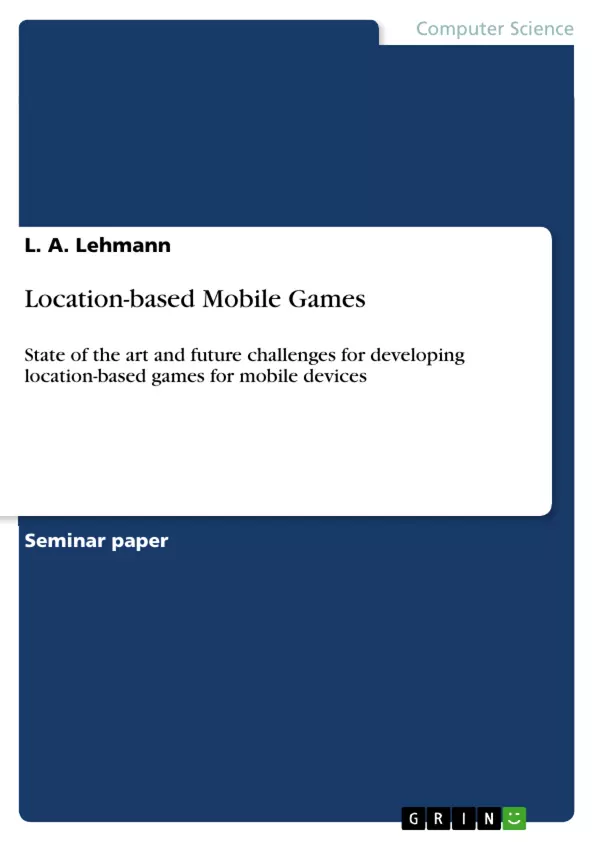In the recent years location-based services have become more and more popular due to advanced mobile devices that make the use of these services very convenient. With the rise of location-based services location-based games will also gain popularity and become more wide spread.
This seminar paper describes game patterns and new game types that are possible with location based games. It also examines different techniques to determine the geolocation of players, and it analyses the changes to the game experiences known from traditional video games.
Ultimately this paper gives an overview of the current state of the art concerning location-based games and discusses several issues and possibilities concerning the implementation of one.
Table of Contents
- 1 Introduction
- 2 Overview
- 2.1 Game Patterns of LBGs
- 2.2 Search-and-Find
- 2.3 Follow-the-Path
- 2.4 Chase-and-Catch
- 2.5 Change-of-Distance
- 2.6 LBG Usage Possibilities
- 2.7 Entertainment
- 2.8 Education
- 2.9 Physical Activity
- 2.10 Advertising
- 2.11 Data Acquisition
- 3 Determining Player Positions
- 3.1 (A-)GPS
- 3.2 Cell-ID
- 3.3 Wi-Fi Access Points
- 3.4 IP Geolocating
- 3.5 Real World Artifacts
- 3.6 Self-reported Positioning
- 3.7 Combination of Methods
- 4 Changes to the Game Experience
- 4.1 Social Interaction
- 4.2 Perception of Real World
- 5 Conclusion
- 6 Future Challenges
- 6.1 Energy Consumption
- 6.2 (In)Accuracy of Positioning Systems
- 6.3 Location-based Cheating
- 6.4 Telling a Story
- 6.5 Delimiting the Game Field
Objectives and Key Themes
This seminar paper aims to provide an overview of location-based mobile games (LBGs), exploring their game mechanics, technical underpinnings, and impact on the gaming experience. It examines the potential of LBGs across various applications.
- Game patterns and types in location-based games
- Methods for determining player geolocation
- Changes to the game experience compared to traditional video games
- Potential applications of LBGs (entertainment, education, etc.)
- Challenges in implementing location-based games
Chapter Summaries
Chapter 1: Introduction introduces the rapid growth of the smartphone market and its impact on the video game industry, highlighting the emergence of location-based games as a new gaming paradigm.
Chapter 2: Overview provides a general overview of location-based games, detailing various game patterns such as search-and-find, follow-the-path, and chase-and-catch. It also explores diverse applications of these games, including entertainment, education, and advertising.
Chapter 3: Determining Player Positions discusses different techniques used to determine a player's location in location-based games, covering GPS, Cell-ID, Wi-Fi, IP geolocation, and the use of real-world artifacts. It also addresses the combination of methods.
Chapter 4: Changes to the Game Experience analyzes how location-based games alter the gaming experience compared to traditional video games, focusing on aspects like social interaction and the player's perception of the real world.
Keywords
Location-based games, mobile games, GPS, geolocation, game design, smartphone technology, user experience, social interaction, augmented reality.
- Citation du texte
- L. A. Lehmann (Auteur), 2012, Location-based Mobile Games, Munich, GRIN Verlag, https://www.grin.com/document/187510



